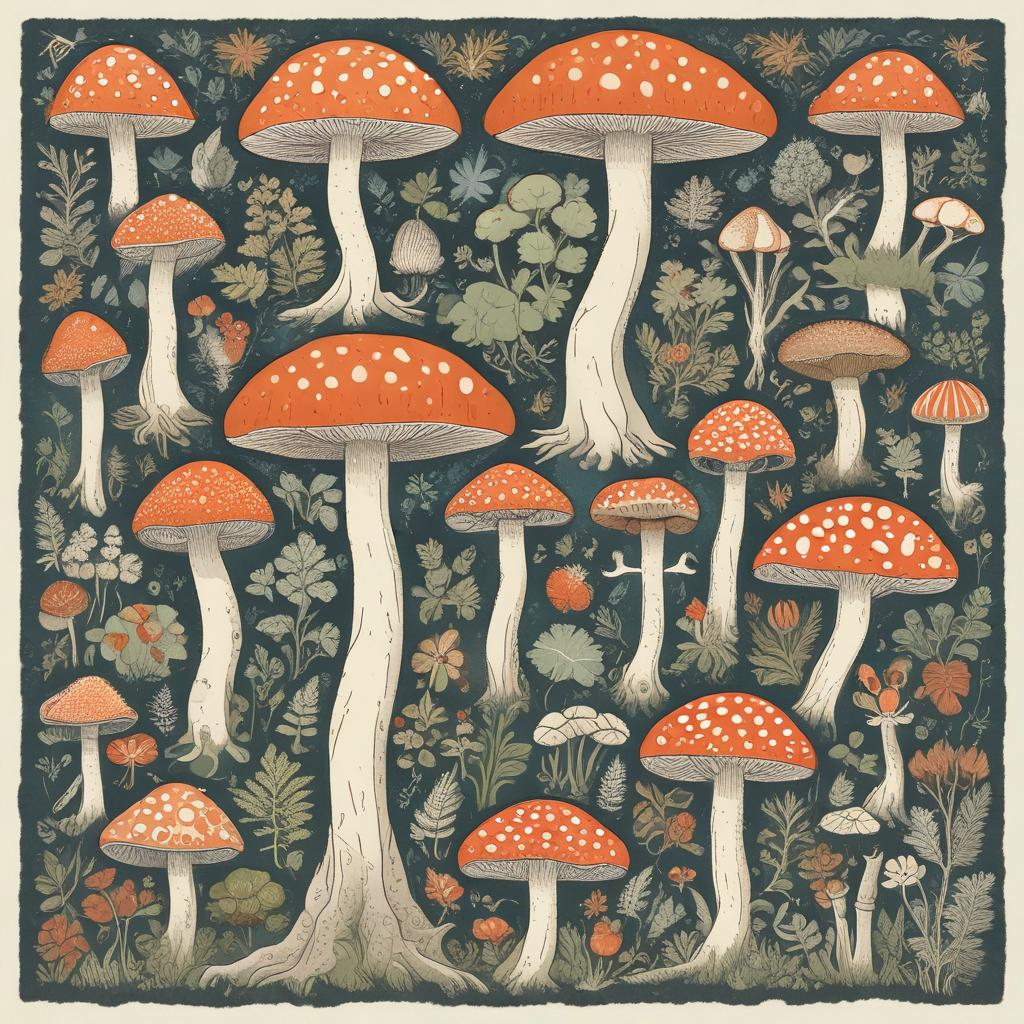What are symbiotic relationships in fungi?
Symbiotic relationships involve interactions between two different organisms living close to each other. Fungi form several types of symbiotic relationships, notably mutualistic, commensalistic, and parasitic. In mutualism, both fungi and their hosts benefit from their association. Commensalism involves one participant benefiting without significantly affecting the other, whereas parasitism features one organism benefiting at the expense of the other.

Can you explain the role of fungi in mutualistic relationships?
In mutualistic relationships, fungi contribute significantly to ecosystem health and productivity. One of the most common and important mutualistic relationships involving fungi is mycorrhiza, where fungi associate with the roots of plants. In this arrangement, the fungus enhances the plant's ability to absorb water and nutrients from the soil, while the plant provides the fungus with carbohydrates formed during photosynthesis.
What are some examples of mutualistic relationships involving fungi?
Mycorrhizal Fungi and Plants: Nearly 90% of all plant species form mycorrhizal relationships with fungi. These relationships are crucial for the survival and health of both the plant and the fungus.
Lichens: A lichen is a complex relationship that involves a fungus (usually an ascomycete), an alga, and sometimes a cyanobacterium. Together, these organisms form a new organism with properties that are very different from those of its components.
Endophytic Fungi and Plants: Endophytic fungi reside within the tissues of living plants and can help their hosts by producing chemicals that deter herbivores and protect against pathogens.
How do mycorrhizal fungi enhance plant nutrient uptake?
Mycorrhizal fungi increase plant nutrient uptake by extending their hyphae, which are long, thin fungal threads, far into the soil beyond the plant roots. This extended network helps in acquiring nutrients, particularly phosphorus and nitrogen, from soil areas not accessible to plant roots. Additionally, mycorrhizal fungi can break down complex soil nutrients into simpler forms that plants can easily assimilate.
What are the differences between ectomycorrhizae and endomycorrhizae?
Ectomycorrhizae: In this type of mycorrhiza, the fungal hyphae do not penetrate the living cells of the plant roots but instead envelop the outer layers. This type is common in many tree species, including pines and oaks.
Endomycorrhizae: Also known as arbuscular mycorrhizae, this type involves the fungus penetrating the cortical cells of the roots. This type is more common and occurs in the vast majority of plants, including many agricultural crops.
What benefits do endophytic fungi provide to their host plants?
Endophytic fungi, residing within the plant tissues, can confer numerous benefits to their host. These include enhancing resistance to pests and diseases, increasing tolerance to environmental stressors such as drought or heavy metals, and improving the host's growth rates. Some endophytes also produce bioactive compounds that can be harnessed for pharmaceutical purposes.
How do fungi in lichen associations survive in extreme environments?
Lichens are notably resilient and can inhabit extreme environments ranging from arctic tundra to rocky deserts. The fungal component provides structure and protects the photosynthetic algae or cyanobacteria from environmental stresses, while the algae or cyanobacteria supply photosynthetically derived nutrients. This partnership enables lichens to survive in places where neither fungi nor algae could survive alone, showcasing an impressive adaptation through symbiosis.
Can you discuss the parasitic relationships involving fungi?
While many fungal relationships are mutualistic, there are also parasitic fungi that can cause significant harm to their hosts. For instance, the fungus Ophiostoma ulmi, which causes Dutch elm disease, infects and kills elm trees. Similarly, the fungus Puccinia graminis causes wheat stem rust, which can devastate wheat crops. In these relationships, the fungi benefit by extracting nutrients from their living hosts, often resulting in disease or death of the host.
Are there any technological or medicinal applications of symbiotic fungi?
Symbiotic fungi have numerous applications in technology and medicine. For example, the discovery of penicillin from the fungus Penicillium notatum has been critical in the development of antibiotics. In agriculture, mycorrhizal fungi are used to enhance crop productivity and sustainability. Additionally, research into fungal endophytes might lead to new bioactive compounds useful in drug development.
What is the future of research in fungal symbioses?
The future of research in fungal symbioses looks promising, with potential breakthroughs in environmental sustainability, agriculture, and medicine. Researchers are exploring how to harness these relationships to promote plant growth under harsh conditions, reduce dependency on chemical fertilizers and pesticides, and uncover new drugs from fungal-derived compounds. As our understanding deepens, the role of symbiotic fungi in ecological balance and human welfare becomes increasingly evident.


.jpg)




.jpg)




.png)
0 Comments